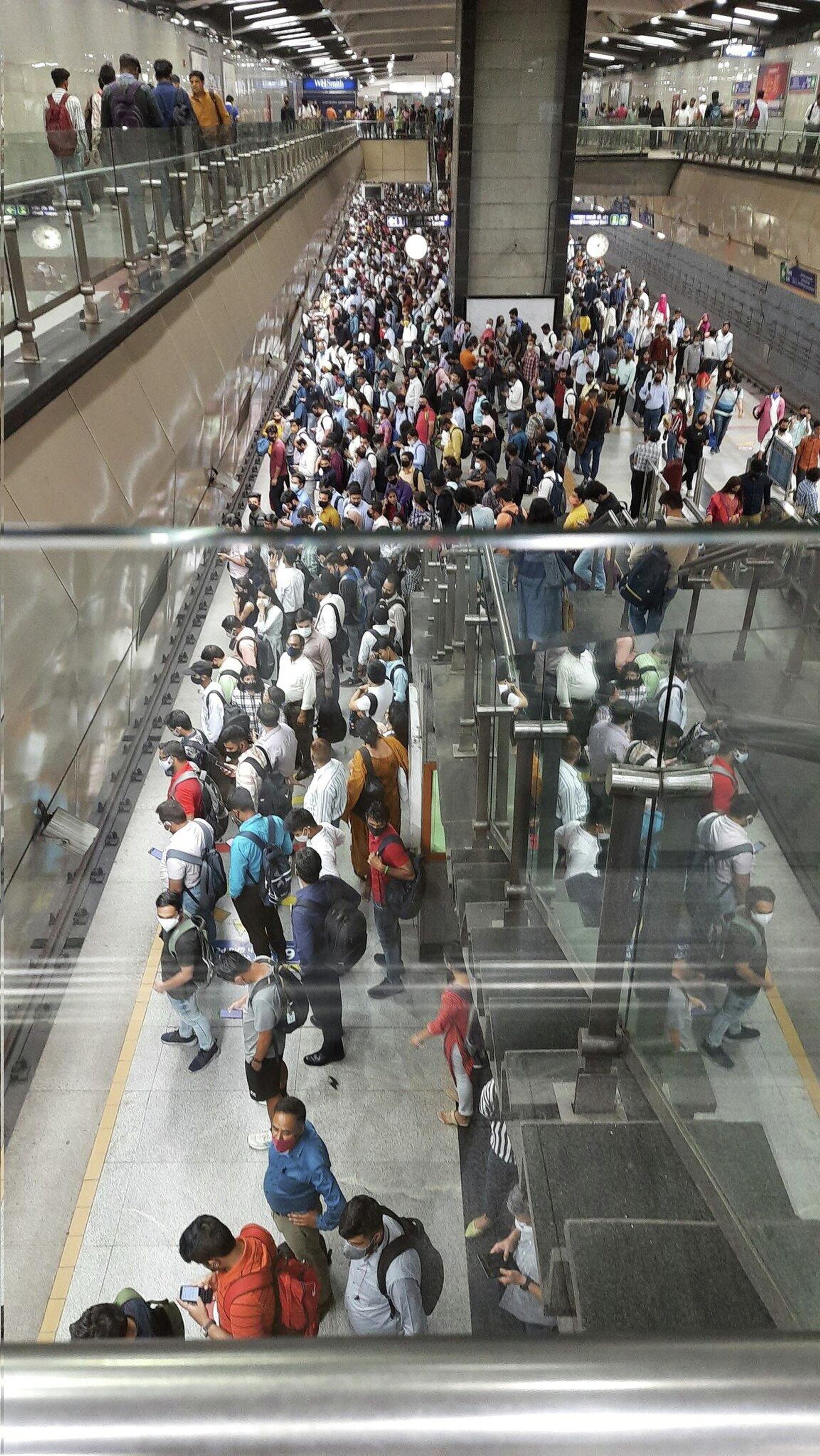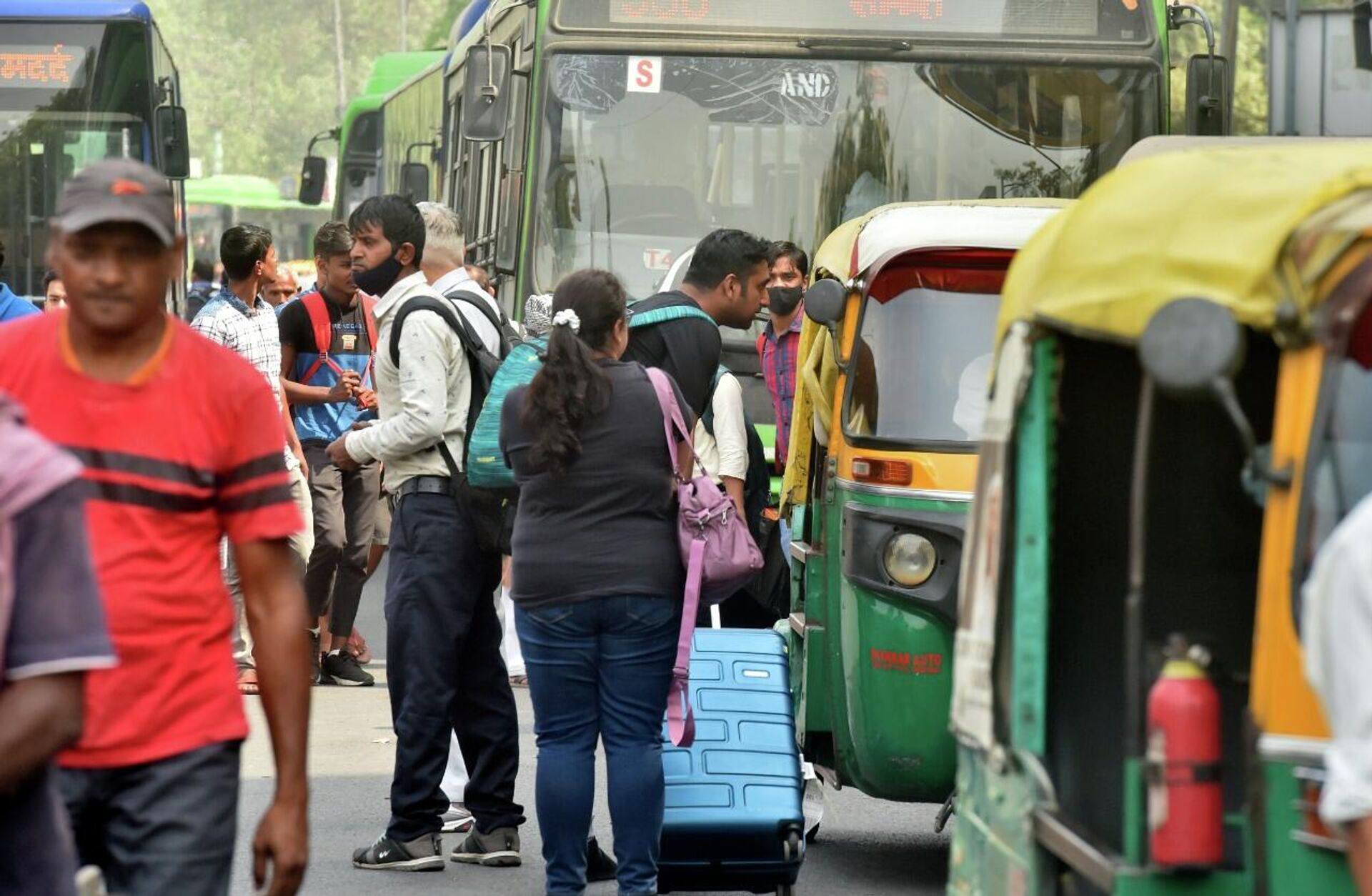https://sputnikglobe.com/20220418/delhi-citizens-in-hot-mess-as-cab-auto-drivers-go-on-two-day-strike-1094856135.html
Delhi Citizens in Hot Mess as Cab, Auto Drivers Go on Two-Day Strike
Delhi Citizens in Hot Mess as Cab, Auto Drivers Go on Two-Day Strike
Sputnik International
In June 2019, the Delhi government hiked the fares of auto-rickshaws by around 18 percent over prevailing rates. However, the fuel price has increased by up to... 18.04.2022, Sputnik International
2022-04-18T12:35+0000
2022-04-18T12:35+0000
2022-07-19T10:43+0000
delhi
new delhi
delhi metro
taxi drivers
strike
fuel price
https://cdn1.img.sputnikglobe.com/img/07e6/04/12/1094856743_0:192:2048:1344_1920x0_80_0_0_4545aa9c02432066ed7fd31de3d5b000.jpg
Delhi's taxi and auto unions began a two-day strike on Monday, demanding a fare revision and subsidy for compressed natural gas (CNG) prices. All private vehicles in the capital run on CNG, which is an eco-friendly alternative to gasoline. Currently, Delhi has a little over 90,000 auto-rickshaws (autos) and more than 80,000 registered taxis.According to auto unions, over 90 percent of drivers have agreed to stay off the roads.Strike Affects CommonersThe strike forced many commuters to opt for public transport to commute. Many of them were not aware of the strike and had to wait long hours for government-run buses while trying to book app-run cabs and waiting for auto-rickshaws.On Monday morning, footfall on Delhi Metro trains was higher than usual, one official told Sputnik at the Hauz Khas metro station.One commuter, Sarita Saini, at the South Extension area bus stop said, “I have been waiting for autos for the past 40 minutes. I found only two autos. And they’re charging three time the usual price”.Saini said that she was not aware of the strike.Autos and mini buses play a crucial role in last-mile connectivity running from metro stations to interior localities of the city.Auto Unions Speak UpRajendra Soni, General Secretary of Delhi Auto Rickshaw Sangh, said the “unprecedented” hike in rates of CNG have taken a toll on auto and cab drivers.“But why was such a situation created? We also have a family to run, and the price-rise affects us too”, Soni further added.On 11 April, hundreds of auto, taxi, bus, and cab drivers staged a protest at the Delhi Secretariat, demanding a subsidy for CNG prices."We also wrote to the Delhi State chief on 6 April demanding that a subsidy of INR 35 ($0.46) per kg on CNG should be provided”, Soni further said.The CNG price has hiked by as much as 60 percent in the past year, and with the latest rise of INR 2.5 ($0.03) per kg on 14 April, the price now stands at INR 71.61 ($0.94) per kg.Meanwhile, many auto and taxi unions staged a protest outside the residence of Delhi State chief Arvind Kejriwal and at other locations.
delhi
new delhi
Sputnik International
feedback@sputniknews.com
+74956456601
MIA „Rossiya Segodnya“
2022
Deexa Khanduri
https://cdn1.img.sputnikglobe.com/img/07e4/0c/1e/1081607388_0:0:961:960_100x100_80_0_0_e9e931b8c1e18fb41f3074e2145d7a3a.jpg
Deexa Khanduri
https://cdn1.img.sputnikglobe.com/img/07e4/0c/1e/1081607388_0:0:961:960_100x100_80_0_0_e9e931b8c1e18fb41f3074e2145d7a3a.jpg
News
en_EN
Sputnik International
feedback@sputniknews.com
+74956456601
MIA „Rossiya Segodnya“
Sputnik International
feedback@sputniknews.com
+74956456601
MIA „Rossiya Segodnya“
Deexa Khanduri
https://cdn1.img.sputnikglobe.com/img/07e4/0c/1e/1081607388_0:0:961:960_100x100_80_0_0_e9e931b8c1e18fb41f3074e2145d7a3a.jpg
delhi, new delhi, delhi metro, taxi drivers, strike, fuel price
delhi, new delhi, delhi metro, taxi drivers, strike, fuel price
Delhi Citizens in Hot Mess as Cab, Auto Drivers Go on Two-Day Strike
12:35 GMT 18.04.2022 (Updated: 10:43 GMT 19.07.2022) Deexa Khanduri
Sputnik correspondent
In June 2019, the Delhi government hiked the fares of auto-rickshaws by around 18 percent over prevailing rates. However, the fuel price has increased by up to 60 percent in the past year.
Delhi's taxi and auto unions began a two-day strike on Monday, demanding a fare revision and subsidy for compressed natural gas (CNG) prices.
All private vehicles in the capital run on CNG, which is an eco-friendly alternative to gasoline. Currently, Delhi has a little over 90,000 auto-rickshaws (autos) and more than 80,000 registered taxis.
According to auto unions, over 90 percent of drivers have agreed to stay off the roads.
The strike forced many commuters to opt for public transport to commute. Many of them were not aware of the strike and had to wait long hours for government-run buses while trying to book app-run cabs and waiting for auto-rickshaws.
On Monday morning, footfall on Delhi Metro trains was higher than usual, one official told Sputnik at the Hauz Khas metro station.
One commuter, Sarita Saini, at the South Extension area bus stop said, “I have been waiting for autos for the past 40 minutes. I found only two autos. And they’re charging three time the usual price”.
Saini said that she was not aware of the strike.
Autos and mini buses play a crucial role in last-mile connectivity running from metro stations to interior localities of the city.
Rajendra Soni, General Secretary of Delhi Auto Rickshaw Sangh, said the “unprecedented” hike in rates of CNG have taken a toll on auto and cab drivers.
“The government has been raising fuel prices on a daily basis since March. But our rates have been the same for the last three years”.
“But why was such a situation created? We also have a family to run, and the price-rise affects us too”, Soni further added.
On 11 April, hundreds of auto, taxi, bus, and cab drivers staged a protest at the Delhi Secretariat, demanding a subsidy for CNG prices.
"We also wrote to the Delhi State chief on 6 April demanding that a subsidy of INR 35 ($0.46) per kg on CNG should be provided”, Soni further said.
The CNG price has hiked by as much as 60 percent in the past year, and with the latest rise of INR 2.5 ($0.03) per kg on 14 April, the price now stands at INR 71.61 ($0.94) per kg.
Meanwhile, many auto and taxi unions staged a protest outside the residence of Delhi State chief Arvind Kejriwal and at other locations.






